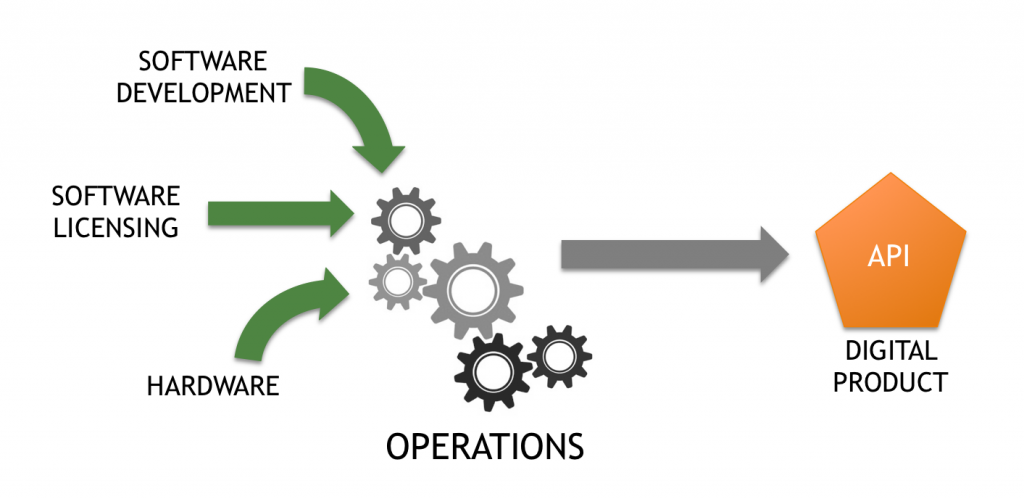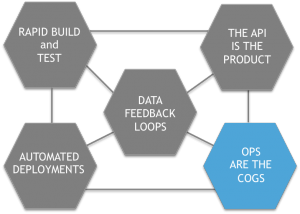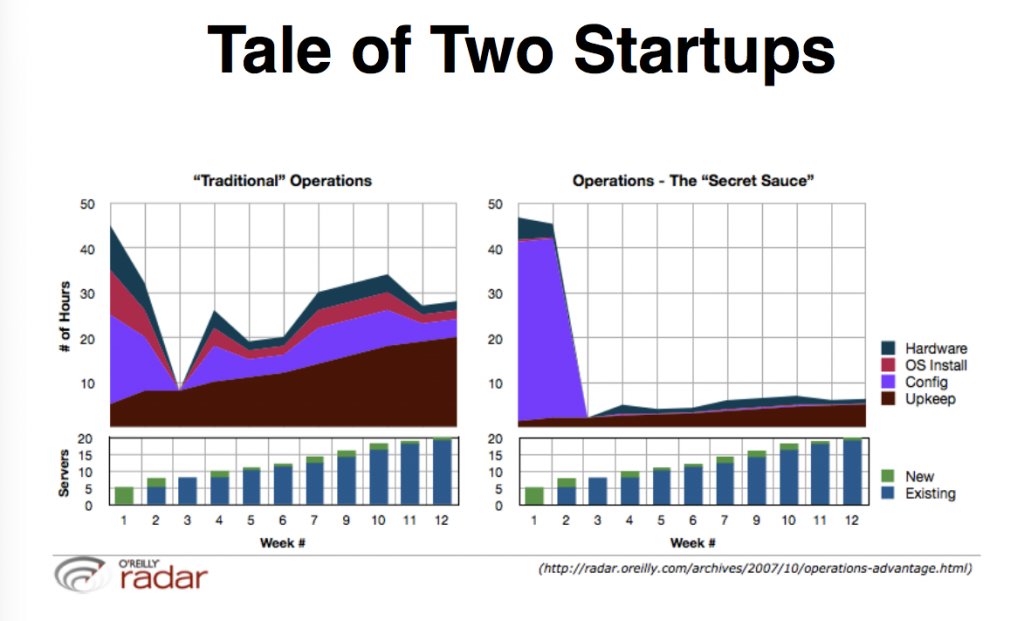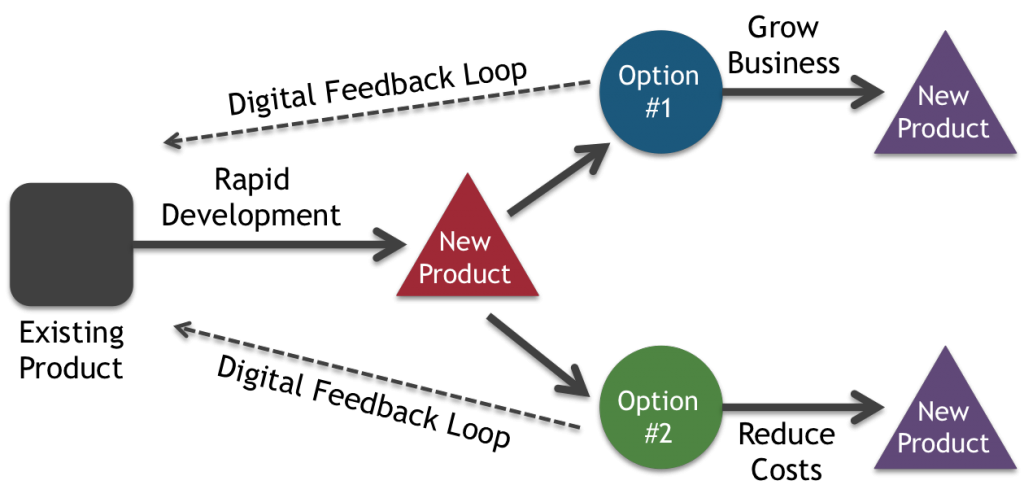This research is part of five reports looking at the alignment of business and technology within a Digital Business Platform. Other reports will focus on Digital Feedback Loops, how the API is the Product, Rapidly Building and Deploying Applications, Automated Deployments, and Controlling the Operational COGS.]
Premise: Every successful business has a relentless focus that every cost in their product or service aligns to differentiated value for their customers. This is a core strength of any market-facing product team. But for many IT organizations, this has not been a key focus area in deploying or operating productivity-centric business applications. As the IT charter evolves towards a Digital Business Platform, it will be critical to understand the operational costs of delivering new products to market, and which levers can be pulled to affect those costs, including:

- Adopt new practices. Just as manufacturers in the 1980s and 1990s focused on lean manufacturing and just-in-time (JIT) inventory systems to reduce costs in the building process, so to do IT organizations need to constantly evolve their processes to reduce unnecessary costs in how they deliver digital products and services.
- Be Agile throughout. The ability to reduce costs from the system is done not just by implementing certain technologies, but by better aligning product teams (Development and Operations) to focus on throughput of work.
- Choose to create options. In fast moving digital markets, the goal must be to deliver current value and future options.. Successful businesses will build products with digital interfaces and processes that can be enhanced, iterated, extended and analyzed more quickly.
Reducing Operational Costs in Delivering Digital Products

At its core, a data center or cloud environment is a 21st century “bits factory.” Just as factories in the 20th century produced automobiles, pharmaceuticals, furniture and many other durable goods, the data centers of the 21st century are producing digital goods. They must turn the raw materials of engineering resources, code and data into consumable applications and APIs. And those inputs must be optimized as COGS (Cost of Goods Sold) in a similar manner to durable goods.
While these COGS can be composed of many elements – software engineering, software licensing, hardware – the one that requires significant focus is the labor associated with operations. Operations is somewhat of an dual-headed monster as businesses transition from cost-centric IT to Digital Business Platforms. While the other COGS inputs can be controlled and align to the digital product output, operations is an areas that can either be a significant differentiator or a significant barrier to success.

As companies focus on leaner delivery mechanisms, they often follow these key models:
- Visualize the Intended Experience – Creating Value Stream Maps for analyzing the current state and designing a future state for the series of events that take a product or service from its beginning through to the customer. These maps deliver a visual way for business and technology teams to think about what elements are critical to deliver value to a customer and where there are areas of unnecessary activities.
- Structuring the team Interactions – Using Kanban boards to identify workflows and throughput across multiple teams and tasks. These are used to visualize the frameworks needed to have teams work through specific tasks, as well as understand how parallel activities are interrelated or dependent.
- Reduce On-Going Errors – Identifying repetitive tasks and applying automation to reduce costs, increase security and eliminate human errors. This is not just a technical activity, but it needs to become a pervasive mindset across the team. By creating a highly automated environment, the IT organization can not only move faster, but reduce 70%+ of the errors that lead to downtime and security breaches.
- Measuring the Delivery Velocity – Focusing on ways to measure success and reducing technical debt that causes slowdowns in workflows. By understanding what elements create impediments to delivery velocity and measuring them for improvement over time, IT organizations are able to focus on the most critical aspect of reducing the operational COGS within the overall system.
VIDEO: Canonical CEO Mark Shuttleworth talks about how next-generation software, or “big software”, is becoming more complex and more companies need to find ways to “embed operations” into this new software.
DevOps – Aligning the Organization to Operate in a more Agile manner
While it is critical to identify the areas of waste within a system, in order to reduce costs and accelerate workflow velocity, it is equally important to have a structure in place to take action upon those findings. The alignment of the Development and Operational teams needed to create those improvements for the product is often called “DevOps”. DevOps is a cultural and operational model that fosters collaboration to enable high-performance IT to achieve business goals.
In discussing Digital Feedback Loops, there were three important DevOps elements that were highlighted:
- Establishing multi-directional data flows between the platform and the marketplace to collect real-time data about actions and context.
- Leveraging intelligent systems to analyze those data flows and create actions to drive new interactions and new value for customers and partners.
- Creating the collaboration within a high-performance IT organization between Development and Operations teams to be able to execute frequent updates to products.
According to the 2015 DevOps Report (IT Revolution):
- High-performing IT organizations experience 60 times fewer failures and recover from failure 168x faster than their lower-performing peers. They also deploy 30 times more frequently with 200 times shorter lead times.
- Lean management and continuous delivery (CI/CD) practices create the conditions for delivering value faster, sustainably.
Managing Cost Options: Better Opportunities to Engage the Market
As companies begin to move to more agile development models, following DevOps best practices, they will begin to encounter a unique set of product options. At the end of each development sprint, new functionality has been created to satisfy a customer or market need. This delivers immediate value to the customer in the way of a feature, and immediate value to the product team in the way of digital feedback. But leading firms also craft options for future moves, options which can be measured for revenue opportunities or cost-reduction opportunities. In either case, the product team is presented with an option to improve the business and potentially improve the product.

While hard costs such as data center equipment and software licensing will always be a consideration of IT organizations, they must also begin to look at the digital feedback loop as a series of options that can be used to further optimize the COGS of the system. As open source software and public cloud resources become more widely used, those hard costs will come down for every IT organization. Using those tools will become less of a competitive advantage for the business over time, just as traditional applications such as Email, ERP, CRM and HCM are no longer differentiators today.
Teams that more actively collect data from the marketplace will be able to make better decisions (or no-decisions) about how to continue interacting with the market. The use of machine learning and artificial intelligence systems to test and trial new ideas will also create new insight into market interactions. Instead of responding to emergencies and outages, these proactive IT organizations will be able to strategically think about their markets based on direct data input. The ability to rapidly iterate a product vs. waiting months for a roadmap to materialize will give some companies a significant advantage in the marketplace.


